I have just returned from a weeks holiday touring around Croatia, Montenegro, and Bosnia and Herzegovina. It was not a birding or butterflying holiday but I did have expectations of getting some time out and finding a few interesting specimens. The region contains a good range of different environments and there is no intensive farming so I had seen reports of organised trips coming back with 140+ butterflies, 90+ birds, and 50 + moths, all recorded in a week. I was staying on the drier and less productive Adriatic coast but I would have been happy to settle for just a fraction of these numbers.
There was one problem - the temperature. I had been expecting it to be around 28°C. It was actually over 40°C nearly every day, peaking at 43°C in the shade when we visited Mostar. For me this is cold beer and air conditioned room time. There were supposed to be Rock Partridges on the hill behind our hotel but it was a 700m climb. I am keen but even before sunrise it was distinctly uncomfortable, by midday the climb would probably be life threatening.
The birds and butterflies also seemed to be in short supply in the heat. There were plenty of Swifts, Swallows, and House Martins around at dawn and dusk and more House Sparrows than I had expected but very little else. I did manage to scrape a few shots together over the week but it was all a little disappointing.
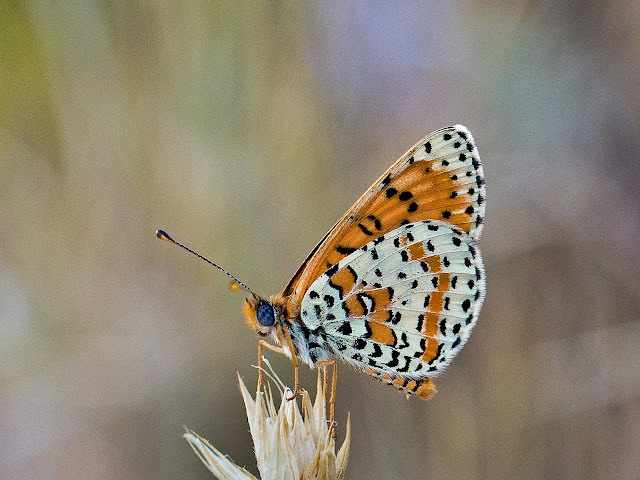 |
| Spotted Fritillary |
 |
| Spotted Fritillary |
This Spotted Fritillary was a good find but it didn't hang around for long and most other butterflies were in poor condition. This Scarce Swallowtail was worth the chase although it has seen better days.
 |
| Scarce Swallowtail - missing a few bits. |
The next two pictures are of the same butterfly. My first thoughts were a Cleopatra which would be a new species for me but then when I photographed the other side, in slightly different lighting conditions, it looks more like a Brimstone. For my first sighting I want to be sure so I think, this time, I will have to settle for a Brimstone.
 |
| Cleopatra or Brimstone |
See comment from Spock below - it looks as though it was a Cleopatra. I am always happy to get feedback, especially when it gives me a new species.
The best place I saw for butterflies was a little meadow around the border post between Croatia and Montenegro. For some reason there seemed to be dozens of them flying there, mostly around the large sign that said strictly no photographs.
There were a few day flying moths in evidence. The first one below I have not been able to identify yet, the second is a four-spotted Footman. I hate to think of the hours I spend searching the web and various books trying to make these moth identifications.
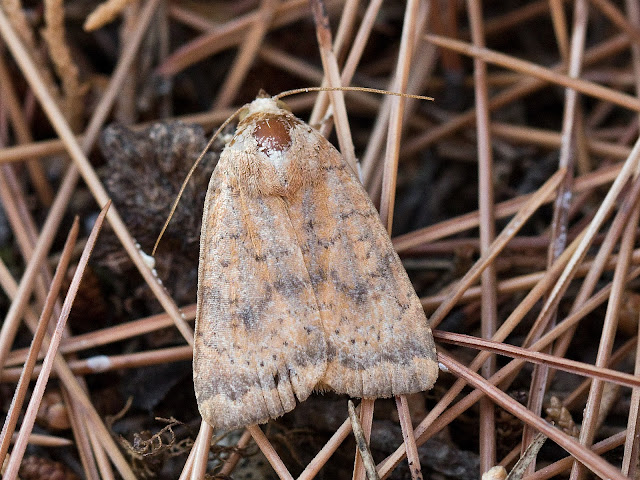 |
| Moth - not identified yet |
 |
| Four spotted Footman |
We only got close enough to one Dragonfly to be able to get pictures, that was the Southern Skimmer. There were good numbers of these around the fountain in the arboretum at Trsteno.
 |
| Southern Skimmer |
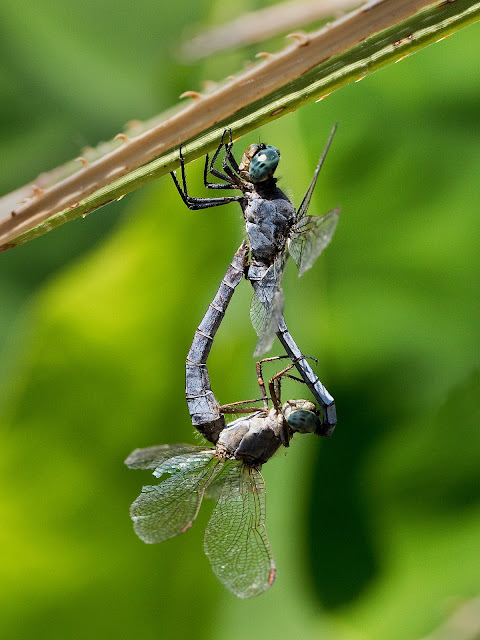 |
| Southern Skimmers in mating-wheel |
 |
| Southern Skimmer |
The last day of the holiday was the only time that I really saw any birds. It started hot and I decided to leave the telephoto lens at the hotel. I had carried it around all week without using it. I wanted to reduce the weight I was carrying and the heat haze was rendering it almost useless. It cooled down a bit during the day and the birds started to appear. Either that or I was starting to look a bit harder. All the following birds were taken with a 100mm macro lens. Not ideal for bird photography but at least a chance to practice the field skills in getting a bit closer.
 |
| Not 100% sure on this one. I think it is probably a female Blue Rock Thrush |
 |
| Turtle Dove |
 |
| Red-backed Shrike |
Lots of insects about in the heat, I have the bites to prove it. Two interesting ones are shown below. The first is a Carpenter Bee. So called as it burrows into wood to create its nest. The picture does not give any idea of scale but these are twice the size of a Bumble Bee. Bees are usually hard to photograph. They seem to vibrate all the time and it is difficult to get a sharp picture. This one though seems less prone to movement making a sharp picture possible.
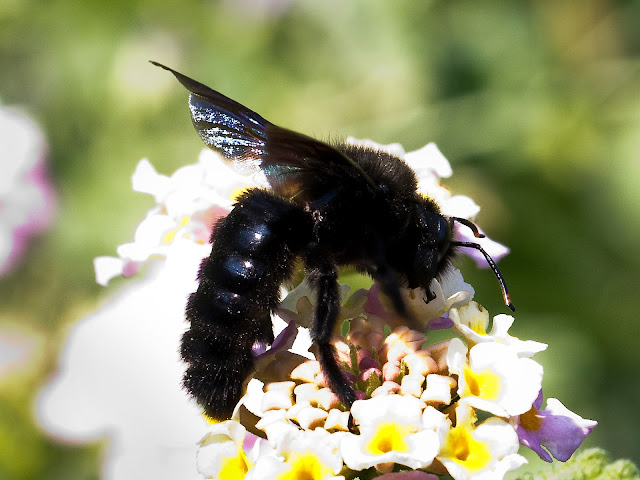 |
| Carpenter Bee |
Another insect that vibrates a lot, or at least makes a lot of noise are the Cicadas. They are hard to spot on the trees but they are everywhere. As soon as the first rays of sunlight come over the horizon and the temperature starts to rise the noise starts up and it stays with you until late in the evening. For me it is all part of the Mediterranean experience.
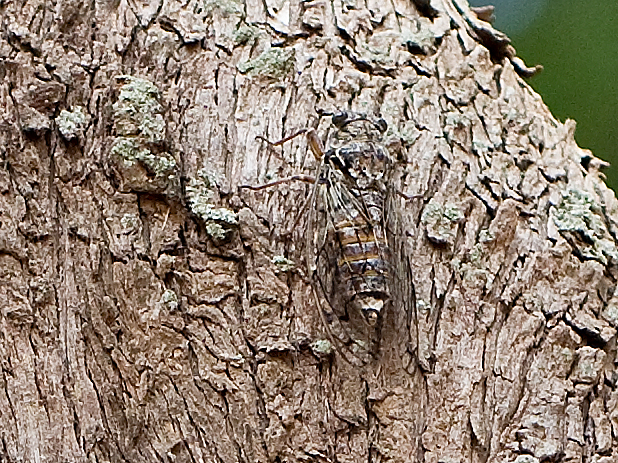 |
| Cicadas |
And one final good news story. These Barn Swallows got too big for their nest and their weight caused it to collapse. A local worker found them and not sure what to do he put the remains of the nest and the chicks into his safety helmet and hung it on the wall. Everyone is happy. The mother flies in about every sixty seconds with food for them. The chicks have a wonderful view of all the tourists and the tourists have a nice picture to take home. I would think that the worker is also quite proud of the little family that he saved.
 |
| Re-housed Barn Swallows |
I think I just got unlucky with the week we chose and the unusually high temperatures. The countryside looks ideal for a birding or butterflying holiday and I would like to give it another go - but I will probably try June next time.


The female butterfly is a Cleopatra, you can tell by the orange streak along the vein on the underside
ReplyDeleteDefinitely Blue Rock Thrush - nice shot !
ReplyDeleteMy thanks to both Steve and Spock for their comments. I am learning all the time.
Delete